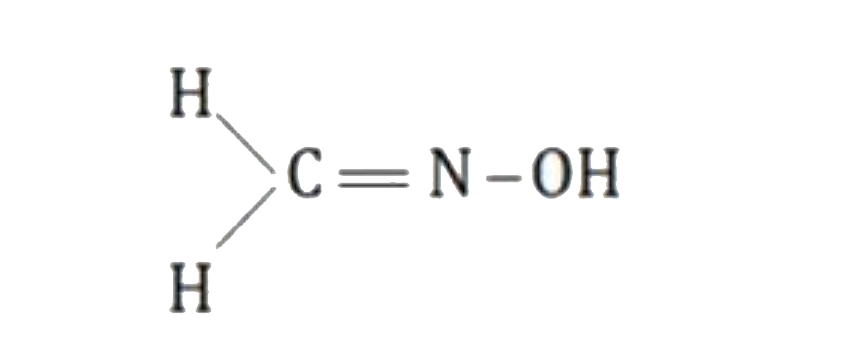Which one of the following will not give alkyl cyanide on treatment with P2O5

C6H5−CH=NOH
C6H5−C | NOH−CH3
A and C
The correct Answer is:D
To determine which compound will not give alkyl cyanide upon treatment with P2O5, we need to analyze the structures of the given compounds and their ability to lose water (H2O) to form a cyanide.
1. Understanding the Role of P2O5:
- P2O5 is a dehydrating agent that removes water from compounds. For a compound to form an alkyl cyanide, it must have a hydroxyl group (–OH) and a hydrogen atom (–H) on the carbon that is adjacent to the hydroxyl group. This allows the removal of water (H2O) to form a cyano group (–C≡N).
2. Analyzing Each Option:
- Option A: If this compound has both –OH and –H, it can lose water to form an alkyl cyanide.
- Option B: Similarly, if this compound has both –OH and –H, it can also lose water to form an alkyl cyanide.
- Option C: If this compound has an –OH group but lacks a hydrogen atom on the carbon that is bonded to the –OH, it cannot lose water and therefore cannot form an alkyl cyanide.
- Option D: This option will also be analyzed based on its structure.
3. Identifying the Non-Alkyl Cyanide Formers:
- From the analysis, if Option C has an –OH but no hydrogen on the adjacent carbon, it will not form an alkyl cyanide.
- If Option A is hydrogen cyanide (HCN), it is not considered an alkyl cyanide because it does not contain an alkyl group.
4. Conclusion:
- Both Option A (if it is HCN) and Option C (if it lacks a hydrogen atom adjacent to the hydroxyl group) will not form alkyl cyanides upon treatment with P2O5.
- Therefore, the correct answer is that both options A and C do not give alkyl cyanides.
Final Answer:
The correct answer is Option D (A and C).
- P2O5 is a dehydrating agent that removes water from compounds. For a compound to form an alkyl cyanide, it must have a hydroxyl group (–OH) and a hydrogen atom (–H) on the carbon that is adjacent to the hydroxyl group. This allows the removal of water (H2O) to form a cyano group (–C≡N).
- Option A: If this compound has both –OH and –H, it can lose water to form an alkyl cyanide.
- Option B: Similarly, if this compound has both –OH and –H, it can also lose water to form an alkyl cyanide.
- Option C: If this compound has an –OH group but lacks a hydrogen atom on the carbon that is bonded to the –OH, it cannot lose water and therefore cannot form an alkyl cyanide.
- Option D: This option will also be analyzed based on its structure.
- From the analysis, if Option C has an –OH but no hydrogen on the adjacent carbon, it will not form an alkyl cyanide.
- If Option A is hydrogen cyanide (HCN), it is not considered an alkyl cyanide because it does not contain an alkyl group.
- Both Option A (if it is HCN) and Option C (if it lacks a hydrogen atom adjacent to the hydroxyl group) will not form alkyl cyanides upon treatment with P2O5.
- Therefore, the correct answer is that both options A and C do not give alkyl cyanides.
The correct answer is Option D (A and C).
Similar Questions
Knowledge Check
Which of the following reactions give alkylation product ?
A B
B C
C D
D
Which of the following give nitrosoamine on treatment with HNO2?
A BH3C−C∣CH3H−NH2C
BH3C−C∣CH3H−NH2C D
D
Which of the following reactions give alkylation product :
View SolutionWhich of the following compounds will give N2(g) on treatment with HNO2
View SolutionWhich of the following amines, can give N-nitrosoamine on treatment with HNO2?
View SolutionWhich of the following compound give methane on treatment with CH3MgI
View SolutionWhich of the following will give N2 gas on treatment with nitrous acid (NaNO2+HCl) ?
View SolutionWhich of the following alcohols do not give white turbidity on treatment HCl/ZnCl2?
View Solution
